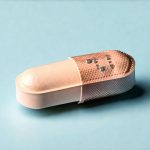Pregnancy and childbirth are profoundly transformative experiences for a woman’s body, bringing immense joy but also significant physiological changes. While much focus rightly centers on recovery from delivery itself, the impact on bladder health is often overlooked. Many women experience urinary incontinence, urgency, or frequency after giving birth – issues that can significantly affect quality of life, yet are frequently dismissed as ‘just part of motherhood’. It’s vital to understand these changes aren’t inevitable and proactive steps can be taken to restore and maintain a healthy bladder function during the postpartum period and beyond. This article aims to provide comprehensive guidance and support for women navigating these challenges.
The pelvic floor, comprised of muscles, ligaments, and connective tissues, supports the bladder, uterus, and bowel. During pregnancy, this structure endures immense pressure from the growing baby and hormonal shifts. Childbirth itself further stresses these structures, potentially leading to weakening or damage. These changes don’t necessarily mean long-term problems; often, with targeted strategies and appropriate support, pelvic floor health can be restored. However, neglecting postpartum bladder health can lead to chronic issues requiring more intensive interventions later on. It’s crucial for new mothers to recognize the signs of bladder dysfunction and seek guidance from healthcare professionals as needed – it’s a sign of self-care, not weakness. Considering urinary health tips can also be beneficial during this time.
Understanding Postpartum Bladder Changes
The changes women experience with their bladders postpartum are incredibly common and can manifest in several ways. Urinary incontinence, or involuntary leakage, is perhaps the most recognized issue. This can range from a few drops when coughing, sneezing, laughing (stress incontinence) to a sudden, strong urge to urinate that’s difficult to control (urge incontinence). Increased urinary frequency – needing to go more often than usual – and nocturia – waking up multiple times at night to pee – are also frequently reported. These aren’t signs of something being ‘wrong’, but rather indications your body needs time to recover and rebuild.
Hormonal fluctuations play a significant role in these changes. Relaxin, a hormone released during pregnancy to prepare the pelvic floor for delivery, continues to affect ligaments and tissues postpartum, making them more relaxed. This can contribute to bladder instability. Additionally, nerve damage can occur during vaginal delivery or Cesarean section, affecting bladder control. It’s important to remember that recovery timelines vary greatly depending on factors like mode of delivery (vaginal vs C-section), length of labor, pre-existing pelvic floor strength, and individual anatomy. Learning best hygiene practices can also help minimize complications.
The good news is many of these changes are temporary and can be improved with targeted interventions. Ignoring them won’t make them disappear; in fact, it may allow the condition to worsen over time. Seeking early assessment and guidance from a healthcare professional – such as a physiotherapist specializing in pelvic floor health or a urogynecologist – is key. They can accurately diagnose the specific issues you’re facing and create a personalized recovery plan.
Pelvic Floor Muscle Exercises (Kegels)
Pelvic floor muscle exercises, commonly known as Kegels, are often recommended for postpartum bladder health, and for good reason. These exercises help to strengthen the muscles that support the bladder, uterus, and bowel, improving bladder control and reducing leakage. However, it’s essential to perform them correctly to maximize their effectiveness. Incorrect technique can even worsen the problem!
Here’s a step-by-step guide:
- Identify your pelvic floor muscles: Imagine you are trying to stop yourself from urinating midstream. The muscles you squeeze are your pelvic floor muscles.
- Practice squeezing and releasing: Squeeze these muscles for 3-5 seconds, then relax for the same amount of time. Repeat this 10-15 times.
- Focus on proper form: Avoid tightening your abdominal muscles, buttocks, or thighs while doing Kegels. The squeeze should be isolated to the pelvic floor.
- Consistency is key: Aim to do these exercises several times a day – little and often is better than long sessions infrequently.
It’s also important to note that too many Kegels can sometimes lead to muscle fatigue and tension. A qualified healthcare professional can help you determine the appropriate frequency and intensity for your individual needs. Don’t start doing Kegels before 6-8 weeks postpartum unless specifically advised by your doctor, as it may interfere with healing. To better understand your body during this period, consider monitoring bladder health.
Lifestyle Adjustments for Bladder Health
Beyond specific exercises, several lifestyle adjustments can significantly support bladder health postpartum. Staying adequately hydrated is crucial – despite the urge to reduce fluid intake to minimize leakage, dehydration can actually irritate the bladder and worsen symptoms. Aim for 6-8 glasses of water per day. However, be mindful of caffeine and alcohol consumption, as these are diuretics that can increase urine production and irritate the bladder.
Dietary changes can also play a role. Reducing intake of spicy foods, acidic fruits, and artificial sweeteners may help lessen bladder irritation. Managing weight is another important factor, as excess weight puts additional pressure on the pelvic floor. Regular, gentle exercise – within your doctor’s recommendations – can help maintain a healthy weight and improve overall muscle tone.
Seeking Professional Guidance & When to Worry
While many postpartum bladder changes are normal and manageable with self-care strategies, there are times when seeking professional guidance is essential. If you experience severe or persistent leakage that interferes with daily activities, frequent urinary tract infections, pain during urination, or a sudden worsening of symptoms, consult your doctor or a pelvic floor physiotherapist.
Don’t hesitate to seek help – it doesn’t mean you’re failing as a mother. Early intervention can prevent minor issues from escalating into chronic problems. Remember, healthcare professionals are equipped to provide personalized support and guidance tailored to your specific needs. They can accurately assess the situation, rule out other potential causes, and develop a comprehensive recovery plan that addresses your concerns and helps restore your bladder health. Your wellbeing matters, and taking steps to prioritize it is an investment in both your physical and emotional health – and ultimately, your ability to fully enjoy motherhood. A focus on daily habits can significantly aid recovery.





















